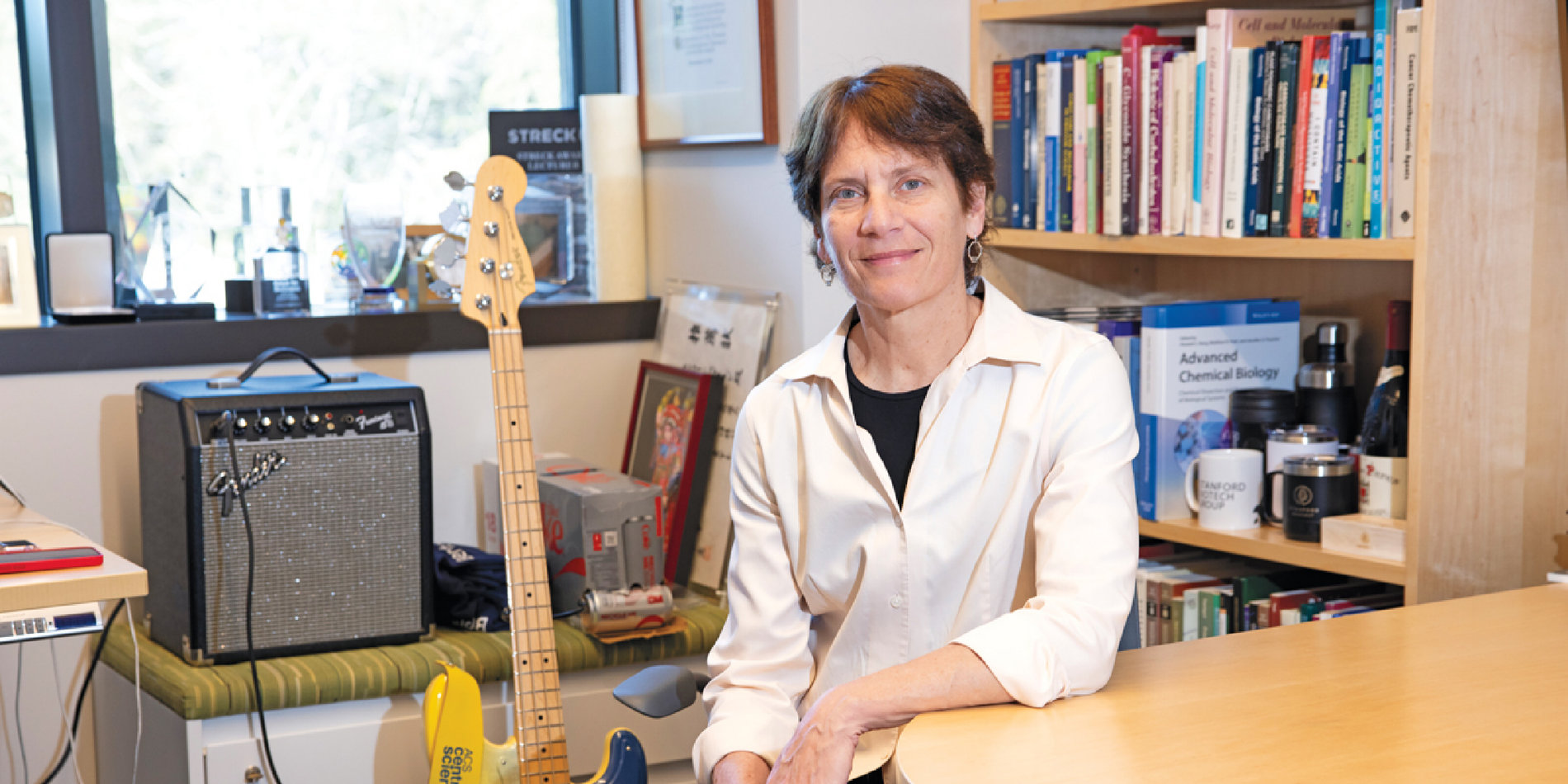Into the lysosome
Monther Abu-Remaileh studies something many of us might have heard of in high school biology and then probably forgot: lysosomes. Discovered in the 1950s, lysosomes are compartments within cells that were originally thought to be a sort of cellular recycling bin, responsible for disassembling large molecules into smaller, reusable components. Here, Abu-Remaileh, an assistant professor of chemical engineering and genetics and a Stanford ChEM-H Institute Scholar, explains why he’s interested in lysosomes, what attracted him to ChEM-H and how he got started working at the intersection of molecules and health.

What’s so interesting about lysosomes?
In the last few years people started to realize that this organelle is more sophisticated and much more important than what was initially thought, and there are multiple reasons for that. The first, which we’ve also known for a while, is that the lysosome is implicated in severe inherited diseases called lysosomal storage diseases.
More recently, we also started to appreciate that the lysosome is implicated in more complex diseases where we don’t really know the pathogenesis very well, including many age-associated diseases including cancer and neurodegenerative disorders like Parkinson’s and Alzheimer’s. Human genetic studies have been showing over time that genetic variants in lysosomal and lysosome-related genes are risk factors for these diseases, but we still don’t know much about the molecular basis of their contribution to disease pathogenesis.
While the human health connection is very interesting, the fundamental biology of the lysosome is also fascinating, especially for people interested in metabolism. Lysosomes are integral part of the nutrient sensing machinery that regulates cellular growth by signaling nutrient sufficiency. Interestingly, this is also the same pathway that regulates lifespan. Moreover, lysosomes are key to metabolic homeostasis, and their function should be tightly regulated to fulfil the metabolic demands of the cell so they can survive under various metabolic states.
There is plenty to discover in that domain, and hopefully better understanding of these different lysosomal functions will help us to understand basic biology related to human diseases, aging and longevity. These and other reasons make the lysosome a very interesting topic to study.
What are some of the questions about the lysosome you’re trying to answer?
While the lysosome is a major metabolic hub in the cell, we still don’t really know how much material the lysosome contributes to the cell and under which conditions this supply becomes essential for cell survival. Moreover, we don’t really know much about the cell-specific functions of the lysosome. For example, many of these diseases manifest in the brain, so one open question is whether the lysosome is providing different nutrients to the brain and that’s why it’s more sensitive than other tissues or whether the brain cells are more sensitive to the material that accumulates if lysosomes are dysfunctional. Answering these questions can help us identify the approaches that we need to take to treat these fatal human diseases.
Another question is, is the link to lysosomes causal? We have a lot of evidence that would suggest it is causal. For example, if you take Parkinson’s patients and then sequence their DNA, you would have almost 50 percent of them having a variant in a lysosome related gene. Still, we need to ask the question: how at the molecular level is this happening? That’s the hope, that we will be able to do some of this here at Stanford.
ChEM-H is focused on understanding health at the molecular level. Why is that important in your research?
The major function of the lysosome is to generate small molecules from larger ones, and then these molecules should be finding their way into the cell to be utilized there. So, if you think about lysosome dysfunction as a problem in any of these diseases, it’s all about molecules, how the lysosome fails to degrade them and how their nutrient content is recycled and how they are being utilized. So, if we can identify the molecular-level pathology in a disease, we can probably have some hits that you can target in a much smarter way.
Why did you want to be part of ChEM-H?
When I came to make this decision about where I wanted to go to do my science, one of the most attractive things about ChEM-H for me was the diversity of the faculty. I’m a biologist, who is studying the biological function of molecules that require a lot of knowledge in chemistry and chemical biology, and we have plenty of that knowledge in the ChEM-H group.
The second thing is the brilliant idea of the knowledge centers that are part of ChEM-H. I’m asking biological questions using metabolomics approaches, and for this I’ll be using the Metabolic Chemistry Knowledge Center. We are also trying to do some structural biology, and the Macromolecular Structure Knowledge Center is very useful for me. And imagine the case that I just talked about, if we can identify pathways in these diseases that can be targeted. We have a Medicinal Chemistry Knowledge Center, which is another useful resource.
What are the bigger picture questions you’re interested in, and why are those questions important?
I’m very interested in biological problems that are related to rare, or orphan, human diseases for two reasons. The first and most important reason is that understanding the basis of these diseases can have a great direct impact on human health, especially since many of these disorders affect kids.
Second, rare diseases can teach us a lot about the more common ones. The assumption here is that many of the pathways that are severely affected in these rare diseases are partially affected in complex age-associated diseases. During aging, there is accumulation of pathological events resulted from these partially defective pathways that are finally expressed in the form of late onset disease. So even if a rare disease may not affect that many people, studying it can impact the lives of patients who have that disease, and it can impact many others as well.



